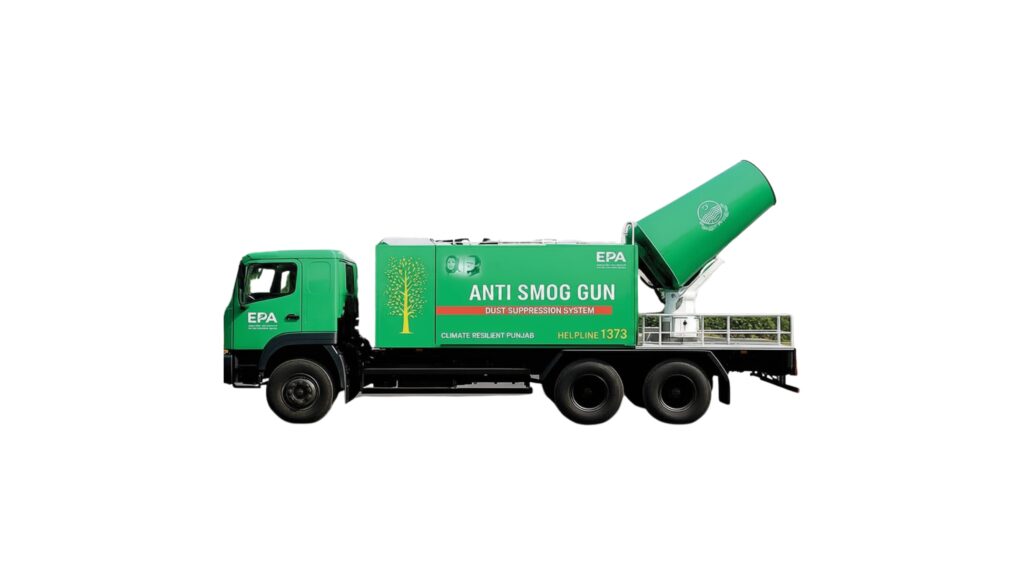Lahore, Pakistan — The city’s fight against toxic air has taken a hopeful turn as the Environment Protection Force (EPF) reported a sharp improvement in Lahore’s air quality after testing anti-smog cannons in the Kahna area. According to official data, the Air Quality Index (AQI) dropped dramatically from a hazardous 666 to 170, marking a 70% reduction in air pollution.
These anti-smog cannons, also known as smog guns, work by spraying a fine mist of water droplets into the air. This mist captures and settles dust, smoke, and PM2.5 particles — the tiny pollutants that contribute heavily to Lahore’s smog problem. Once these particles are trapped, they fall to the ground, leading to temporarily cleaner air. The technology, already used in China and India, is now being tested in Pakistan as part of a broader clean-air initiative.
For Lahore, which frequently ranks among the world’s most polluted cities, this pilot project offers a much-needed ray of hope. Every winter, Lahore’s air pollution levels reach dangerous highs due to vehicle emissions, industrial smoke, construction dust, and crop burning in Punjab. These pollutants, combined with dry weather and temperature inversions, trap smog close to the ground — turning the city into a haze-filled zone.
Environmental experts, however, warn that anti-smog cannons are not a permanent solution. While they can reduce visible pollution and improve AQI in localized areas, their effect is temporary. For sustainable progress, Lahore’s air quality management must focus on long-term strategies such as stricter emission standards, green transportation, industrial regulation, and public awareness campaigns.
The government also needs to address agricultural burning and promote renewable energy sources to reduce reliance on fossil fuels. Without tackling the root causes of pollution, improvements from anti-smog technology may only be short-lived.
Still, the Kahna trial marks a promising start. If continued tests confirm consistent results, the Punjab government may expand the anti-smog cannon project to other pollution hotspots in the province — including Faisalabad, Sheikhupura, and Gujranwala.
The 70% pollution reduction in Kahna highlights how innovative solutions can complement policy reforms to combat air pollution in Pakistan. For now, residents in the area are enjoying a brief breath of relief and perhaps a glimpse of what a smog free Lahore could look like in the future.



